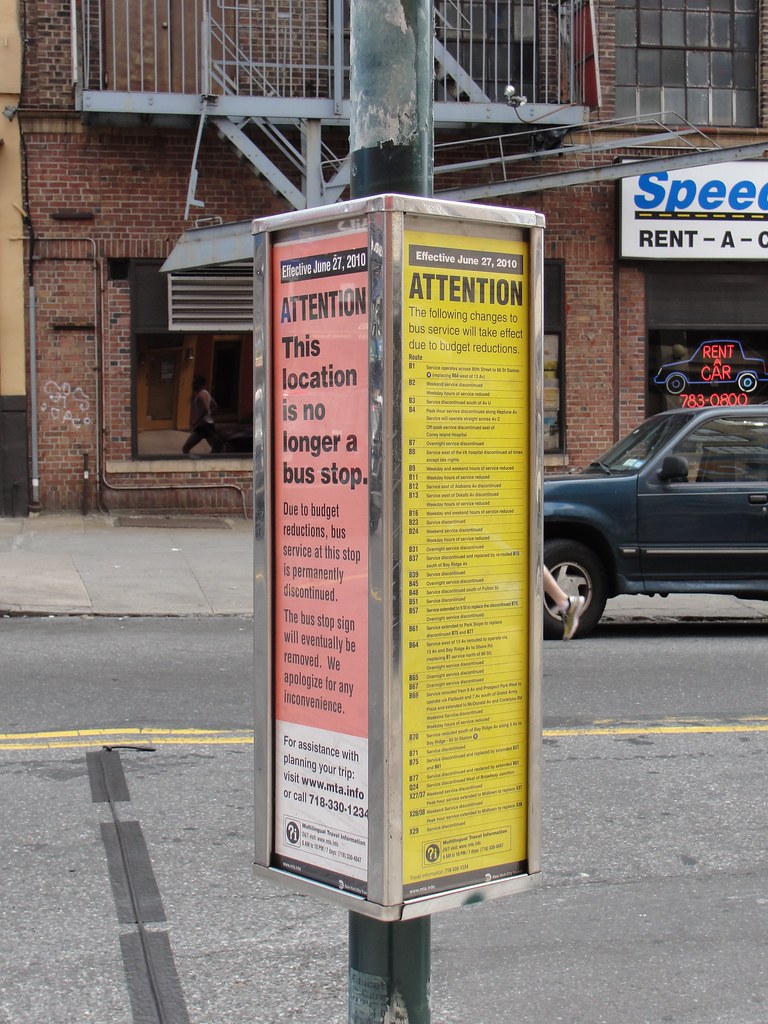Scratchiti will become more prevalent as the MTA scales back on maintenance costs. (Photo by flickr user rdcapasso)
Throughout the 1970s and into the early 1980s, New York City’s subways became a dangerous and unreliable system. As the city went broke and the MTA had little money, maintenance schedules slipped. Graffiti took over the system; trash filled the stations; and car breakdowns and track fires were a way of life.
Since then, the MTA has invested heavily in its rolling stock and maintenance programs. Recognizing that the MTA’s network is one of the — if not the top — drivers of the city’s economy, the authority has spent the last three decades ensuring that trains are graffiti-free and do not break down nearly as often and that stations are relatively cleaner than they once were to minimize track fires.
As the MTA looks to cut more services and employees, we could see the beginnings of a return to the bad old days. Yesterday, the authority announced a series of austerity cuts that will strike at the heart of the system. While I was taking an exhausting final, the authority heads briefed reporters, and Michael Grynbaum has the story. The MTA will eliminate nearly 1000 positions — some administrative and some maintenance-oriented — in an effort to save $115-$150 million. The authority will still face a shortfall of over $200 million that will have to be closed with a larger-than-anticipated fare hike next year. Grynbaum has more:
Hundreds of maintenance workers will be laid off, subway cleaning regimens will be reduced and officials will “let an additional amount of scratchiti occur on windows system-wide” under the plan, said Thomas F. Prendergast, the president of New York City Transit.
The cost-cutting measures are part of an agency-wide plan to close a $400 million budget shortfall, and subway riders will not be the only ones to suffer. Riders on the Long Island Rail Road will be packed into smaller trains on the weekend and occasionally in the morning rush. Football fans will have fewer options for train rides to games at the Meadowlands, and the Metro-North Railroad will place fewer customer assistants in Grand Central Terminal…
Inconvenience is another matter. One item on the chopping block is a program that created two dozen subway announcers, who alerted riders to delays and train progress over station intercoms. Officials said the program proved to be a poor investment.
Prendergast tried to assuage the fears of passengers who still remember the system as it was before the capital investments took hold. “There will be no degradation to safety and reliability,” he said.
Still, programs that improve the underground quality of life are being sacrificed in the name of economics. For instance, anti-scratchiti programs that appeared to be successful are being eliminated due to the expense. Now, the agency will, in the words of Grynbaum, “allow more scratches to accumulate before it replaces windows on trains throughout the system.”
Additionally, trains will be cleaned less frequently. As Heather Haddon of amNew York reports, cleaners will scrub trains only “at one end of the route — meaning a car can travel for more than three hours before it is scrubbed.” Unless New Yorkers make an effort to clean up, train cars will just be dirtier.
This is, of course, nothing short of a failure of politics. The MTA, created 42 years ago to isolate the subways from politicians, has always relied on state funding to break even, and as pension, benefit and debt obligations have saddled the MTA with ever-rising costs, politicians have simply stopped coming up with solutions. East River bridge tolls or congestion pricing with revenue dedicated to the MTA remain the most equitable and rational solutions. Yet, New York State politicians can’t see past their windshield perspectives to understand the role transit plays in the lives of countless millions of New Yorkers a day. The system will have to break down before it is rescued, and it is quickly heading that way.
Site Note: Apologies for the late start this morning. I had a long takehome final yesterday and fell asleep before I could get a post up. I’ll have another one later before the weekend service advisories tonight.




